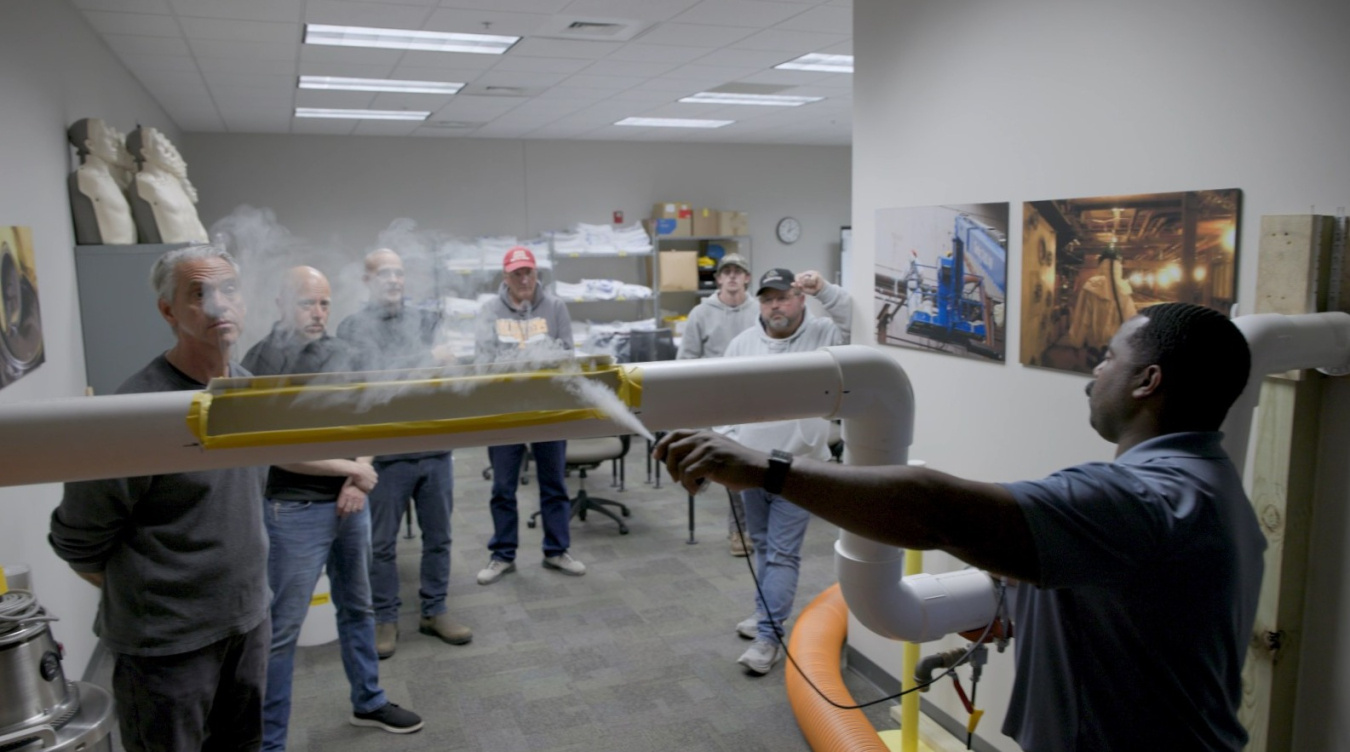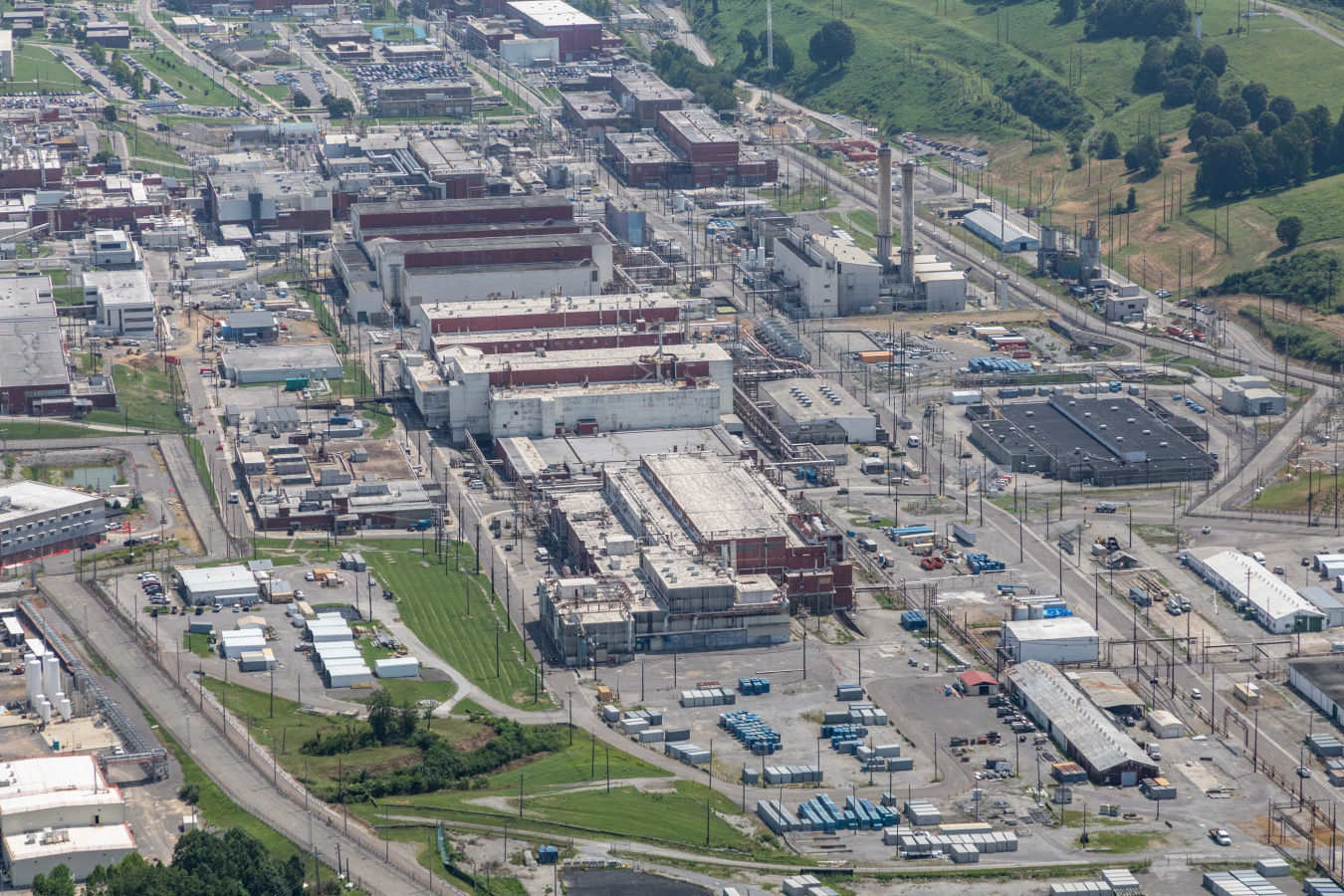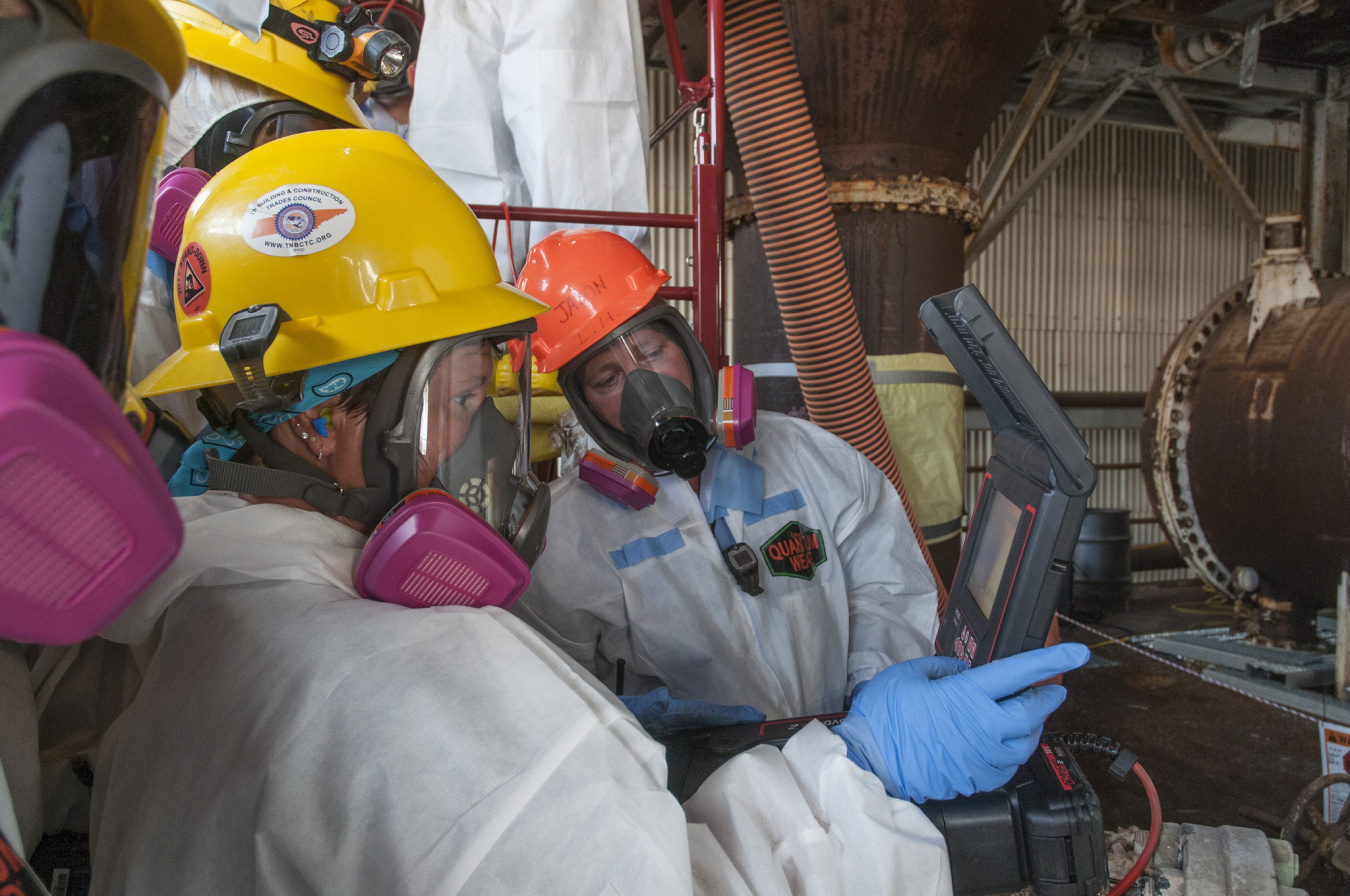The Oak Ridge Office of Environmental Management and contractor UCOR have developed a first-of-its-kind training program for workers supporting cleanup at mercury-contaminated facilities. June 24, 2025.
Office of Environmental Management
June 24, 2025Workers get hands-on experience in UCOR’s new mercury training program. The program helps educate the workforce on what mercury is, where it’s found, the hazards associated with it and control strategies to reduce hazards.
OAK RIDGE, Tenn. — The Oak Ridge Office of Environmental Management (OREM) and contractor UCOR have developed a first-of-its-kind training program for workers supporting cleanup at mercury-contaminated facilities.
The program is designed to ensure protection of workers as they perform decontamination and deactivation in Manhattan Project and Cold War-era facilities to be demolished at the Y-12 National Security Complex. Officials believe it can also be adapted at other sites dealing with mercury across the U.S. Department of Energy (DOE) complex.
Large amounts of mercury were used in Y-12’s operations during the 1950s and 1960s. Over the years, large amounts leaked from equipment into buildings and the surrounding soil and surface water. The largest concentrations are in three massive buildings slated for demolition — Alpha-4, Alpha-5 and Beta-4.
Mercury presents a unique hazard because it is a metal in liquid form that emits vapors, especially in high-temperature environments. Workers must be protected from contacting mercury or breathing its vapors because it can result in acute health effects.
“Until now, DOE did not have a dedicated mercury mitigation training program,” said Joanna Hardin, OREM’s portfolio federal project director for Y-12. “As our cleanup work progressed at Y-12, it became clear that we were encountering increasing quantities of mercury that demanded a higher level of training to ensure our workers remain safe.”
The Alpha-4, Alpha-5 and Beta-4 facilities are pictured, center, at the Y-12 National Security Complex. These facilities have the highest concentrations of mercury contamination at Y-12 due to the operations conducted in the buildings during the 1950s and 1960s.
The multifaceted program trains workers on measures to protect against mercury vapors.
With OREM’s support, UCOR created the program using a team of safety, industrial hygiene and training personnel, and environmental scientists. UCOR worked closely with laborers and construction trades responsible for performing tasks around mercury residues in the buildings undergoing cleanup prior to demolition.
“A cross-functional team worked together to identify this solution to address mercury hazards,” said Larry Brede, UCOR’s Y-12 area project manager. “I am proud of the level of ingenuity, proactiveness and teamwork demonstrated by this team. This is a testament to how a team with diverse talents and skills can solve big problems when they come together focused on workforce safety.”
Oak Ridge workers address mercury contamination outside the Alpha-4 building at the Y-12 National Security Complex.
UCOR’s industrial hygiene group developed a hands-on mercury worker-training program to better educate the workforce on what mercury is, where it’s found, the hazards associated with it and control strategies to reduce hazards.
The training program consists of a two-hour classroom portion and two hours of hands-on scenarios where trainees dress in personal protective equipment and perform tasks in mock scenarios based on their work.
In addition, UCOR engineers developed a robust ventilation design and validation process for vapor mitigation and control strategies.
Another element of the program involves a medical surveillance program operated by UCOR’s health clinic. Crews working in areas with potential for mercury exposure are required to get a baseline test for mercury exposure, and then they are tested every six months or annually based on test results.
OREM and UCOR anticipate the program will minimize the hazards of working in mercury contaminated facilities and provide crews with the knowledge needed to protect themselves and their co-workers.
-Contributor: Sonya Johnson
To receive the latest news and updates about the Office of Environmental Management, submit your e-mail address.




